Learn about Chrome: // Chrome page
TipsMake.com - In the previous article, we introduced you to some of the technical features of Firefox 's about page , and this time we will continue to learn about the same page system of the browser. Chrome, that's chrome: //
Chrome: // About
In chrome: // about this page contains a lot of URLs that lead to different pages, many of which you can open through Chrome's main menu, such as chrome: // bookmarks is the management page. bookmark, chrome: // settings is Chrome 's corresponding Options page:
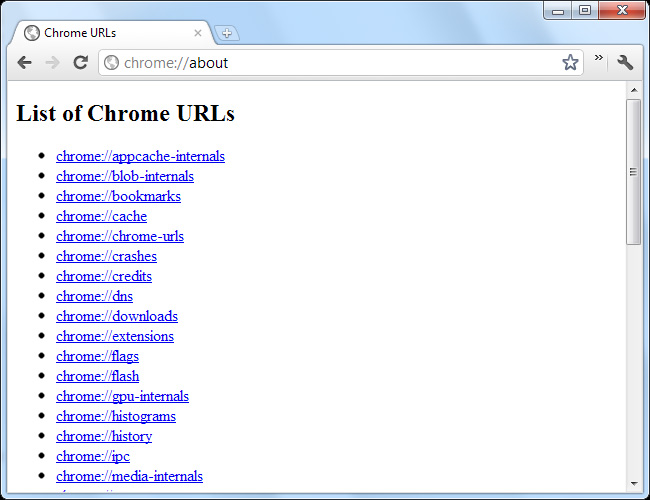
Besides, there are a few special URL paths used for debugging located at the bottom of the page. For example, type chrome: // kill in the Address box to turn off the open tab:
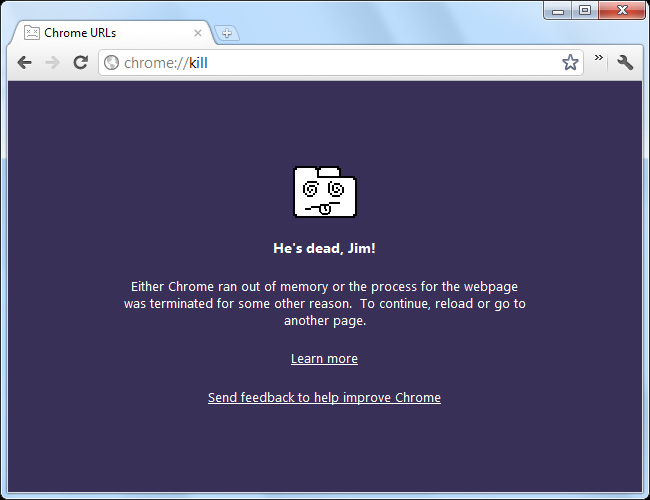
Chrome: Flags
Chrome: // flags , or chrome: // labs pages can be considered the most interesting part of Chrome. Almost all of the features here have not been activated and used in the default mode, and Google also recommends that users be absolutely careful when tampering and editing technical attributes. here. These internal features are related to security, management policies, and stability, but may result in data loss. So consider carefully before deciding to use!

New features are usually enabled here before they are enabled via the default mode. For example, users can enable the Enable NTP Bookmark Features option to add a bookmark section to Chrome's new tab. The new bookmark manager has not been enabled in Chrome 16 yet, but will definitely be changed in subsequent versions.
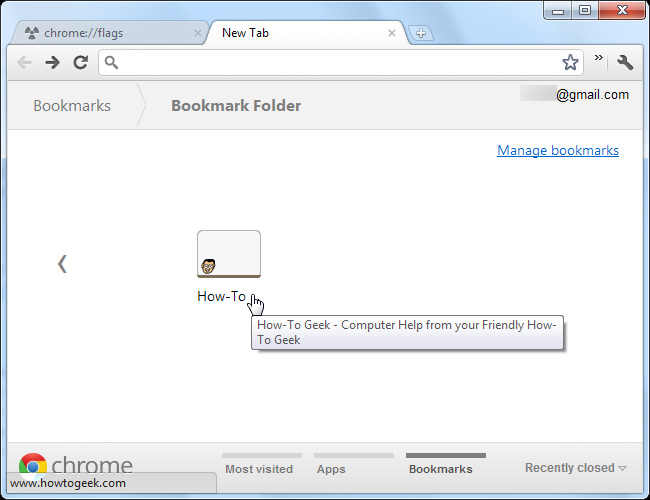
Chrome: Sessions
Another feature is hidden inside chrome: // flags as Enable Syncing Open Tabs , with the main effect being to add the Open Tabs option in Chrome 's Sync Settings section:

After activation, we will see a list of browser sessions in the chrome: // sessions.
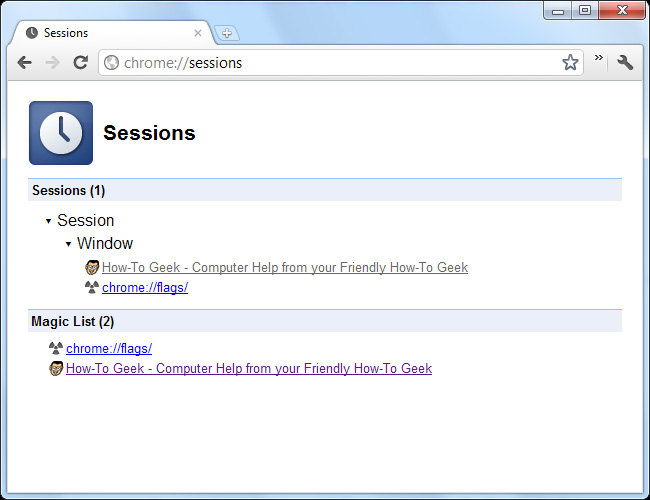
However, this feature is already available in default mode and displayed on Chrome's main interface.
Chrome: // Memory and Chrome: // Tasks
In chrome: // memory , users will know more about Chrome's memory usage information, specifically for the extension and associated applications. In case there are other browsers running, such as Mozilla Firefox or Internet Explorer , it will also display the usage of those browsers.

Besides, you can open chrome: // memory page by clicking on the link Stats for nerds at the bottom of the Task Manager window of Chrome, right-click on Chrome's title bar and select Task Manager or type chrome : // tasks into new tab:

Chrome: // Net-Internals
On the other hand, the chrome: // net-internals page will show all the information and tools that support managing, monitoring and diagnosing connection problems. Support the ability to 'capture' network packets, analyze and save reports to files for future use.

However, most of the tools here are not suitable for normal users, but the Tests section is different. If a website is inaccessible, enter the site's address in the Tests page and Chrome will determine the exact problem for you.

Chrome: // Crashes
In the chrome: // crashes section , the browser will list all the most recent errors. However, we can only see this error if Automatically send usage statistics and crash reports to Google options are enabled under Under the Hood of Chrome Settings .
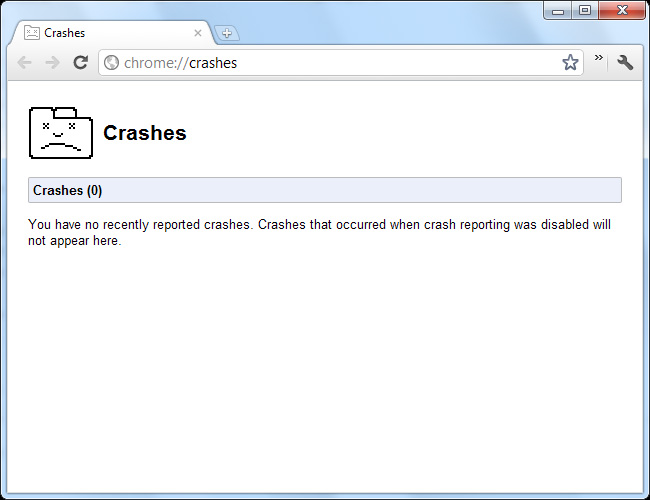
Chrome: // Tracing
Chrome page : // tracing is actually a tool being developed to allow users to analyze Chrome 's performance. Just press the Record button and Chrome will start working:
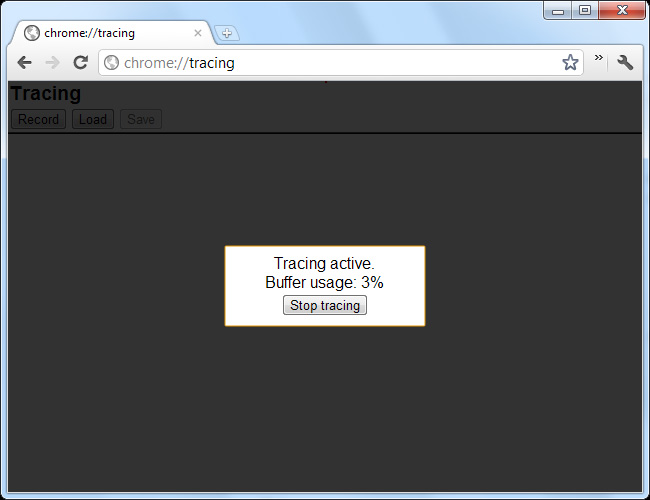
When this process is complete, we can easily know what activities are taking place and take up much of the system's hardware time and resources.
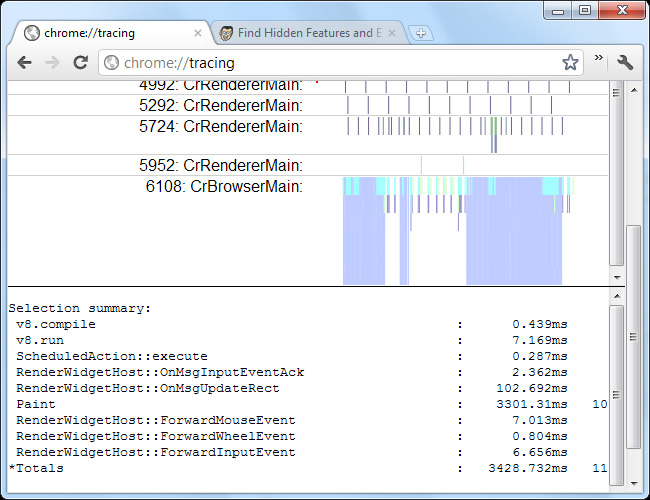
Besides, there are many other sites like, chrome: // flash showing information about flash plug-in, chrome: // sync-internals will show the process of syncing data of Chrome. Good luck!
You should read it
- Chrome browser on Windows computer crashes, this is what you need to do
- You should know that there are 10 hidden pages in the Google Chrome browser, so what effect do they have?
- How to view all bookmarked pages on Chrome browser
- How to customize the new Google Chrome tab page
- How to Save Web Pages as PDF Files on Google Chrome
- Chrome started blocking annoying page redirects
- Put Google as the homepage on Google Chrome
- Chrome adds a warning when an extension takes over the Internet connection
May be interested
- Chrome adds a warning when an extension takes over the Internet connection
 new google engineers add 2 useful features to the chrome browser, help warn users when the utility (extension) hijack proxy settings or new tab page.
new google engineers add 2 useful features to the chrome browser, help warn users when the utility (extension) hijack proxy settings or new tab page. - How to Save Web Pages as PDF Files on Google Chrome
 if you are reading a web page with a lot of text and images, and you want to save it to read later, saving the web page as a pdf file is an effective way to help you review the content offline. pdf files are easy to print and can be read on any device. this article will show you how to save a web page into pdf format using google chrome.
if you are reading a web page with a lot of text and images, and you want to save it to read later, saving the web page as a pdf file is an effective way to help you review the content offline. pdf files are easy to print and can be read on any device. this article will show you how to save a web page into pdf format using google chrome. - TOP 15 extremely useful Chrome extensions that you should know
 chrome - a light and fast browser. with modern advantages, fast page loading speed, good-looking interface and built-in google super powerful search engine, it's hard for users to refuse chrome.
chrome - a light and fast browser. with modern advantages, fast page loading speed, good-looking interface and built-in google super powerful search engine, it's hard for users to refuse chrome. - Learn how to pronounce English with fun games on Chrome
 recently, chrome has implemented a very interesting experience game on its browser, helping users build spelling and pronunciation skills. unlike other games, you'll need to use your voice in this game, and make sure you turn on the computer speakers.
recently, chrome has implemented a very interesting experience game on its browser, helping users build spelling and pronunciation skills. unlike other games, you'll need to use your voice in this game, and make sure you turn on the computer speakers. - How to use Web Highlights to take notes right on the web page
 the web highlights chrome extension instantly highlights and annotates any web page or pdf, helping you keep track of valuable information.
the web highlights chrome extension instantly highlights and annotates any web page or pdf, helping you keep track of valuable information. - Google Chrome browser has 200 million users
 on october 13, the co-founder and ceo of google group, larry page announced that their chrome browser has just reached the milestone of 200 million users.
on october 13, the co-founder and ceo of google group, larry page announced that their chrome browser has just reached the milestone of 200 million users. - How to translate websites into Vietnamese on Chrome browser
 you visit a foreign website and want to translate that page into vietnamese language to facilitate information capture as well as ease for your work. let's learn how to translate web pages into vietnamese using tipsmake.com when using chrome browser!
you visit a foreign website and want to translate that page into vietnamese language to facilitate information capture as well as ease for your work. let's learn how to translate web pages into vietnamese using tipsmake.com when using chrome browser! - How to create a Chrome theme quickly
 chrome makes it easy to create your own browser theme with just a few mouse clicks. choose your preferred color for chrome browser toolbar and set wallpaper right from the new tab page.
chrome makes it easy to create your own browser theme with just a few mouse clicks. choose your preferred color for chrome browser toolbar and set wallpaper right from the new tab page. - Put Google as the homepage on Google Chrome
 google is now a popular search site worldwide. and you can set google as your homepage on google chrome to access it immediately when surfing the web.
google is now a popular search site worldwide. and you can set google as your homepage on google chrome to access it immediately when surfing the web. - How to create a QR code for a page URL in Google Chrome
 starting with the latest version of google chrome developer, you can create qr codes for urls of open pages to share. this tutorial will show you how to create a qr code to share the url of an open page in google chrome.
starting with the latest version of google chrome developer, you can create qr codes for urls of open pages to share. this tutorial will show you how to create a qr code to share the url of an open page in google chrome.










 Which technology device consumes electricity?
Which technology device consumes electricity? Can you cure your laptop yourself?
Can you cure your laptop yourself? Learn about Firefox's Web Developer Tools
Learn about Firefox's Web Developer Tools Learn about Opera page: of Opera browser
Learn about Opera page: of Opera browser How does the firewall work?
How does the firewall work? Learn about Java Driver in MongoDB
Learn about Java Driver in MongoDB